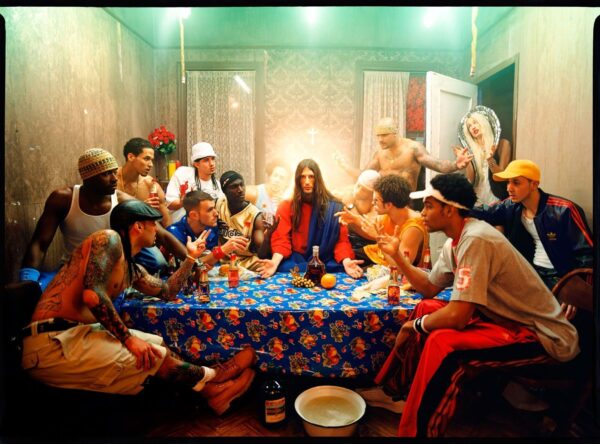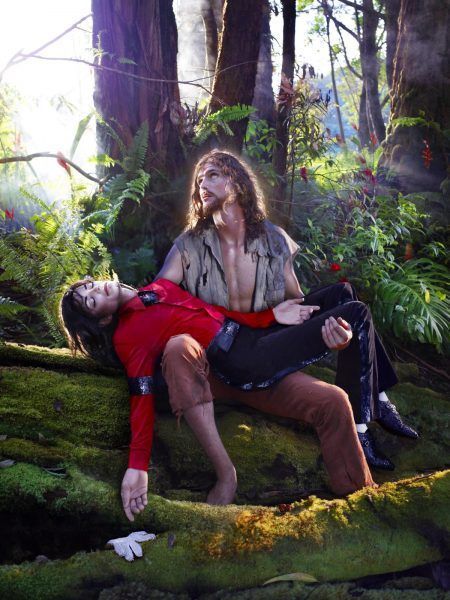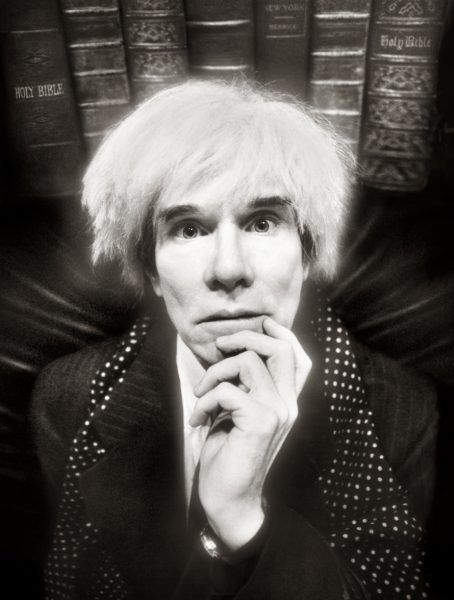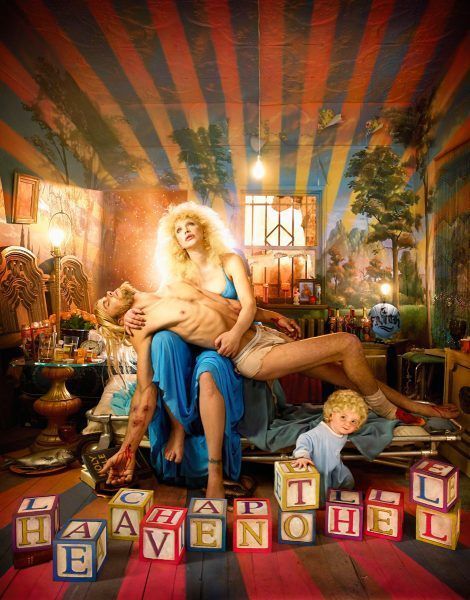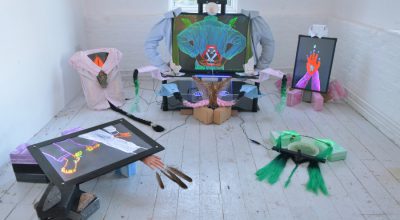
David Lachapelle:»your Intuition is Your Gps»
Combining a unique hyper-realistic aesthetic with profound social messages, David LaChapelle (USA, 1963) has mastered a signature style linked to Pop-Surrealism that has been present throughout his 30 year career. Whether in the commercial or artistic photography, LaChapalle’s images are colorful, flamboyant, full of sensuality and fantasy. The use of metaphor and symbolism is a constant in his work, with references to religious scenes and works of Great Masters.
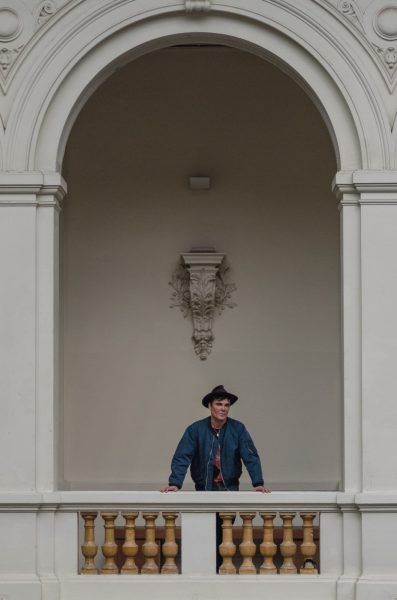
David LaChapelle, Museo de Arte Contemporáneo (MAC), Parque Forestal, July 2015. Photo: Felipe Ugalde
LaChapelle photography career initiated in the 1980’s when he began showing his artwork in New York City galleries. His work caught the eye of Andy Warhol, who offered him his first job as a photographer at Interview Magazine. That led him to working with Vogue, Vanity Fair, GQ, Rolling Stone and i-D, photographing stars such as Madonna, Eminem, Pamela Anderson, Uma Thurman, Elizabeth Taylor, David Beckham, Jeff Koons, Leonardo DiCaprio, Britney Spears, Angelina Jolie and Warhol himself. It was LaChapelle who took the last picture of the King of Pop. This image, along with 90 others, are part of his first solo exhibition in Chile, David LaChapelle: Fotografías 1984-2013.
Financed by Fundación AMA and presented and organized by the Museo de Arte Contemporáneo (MAC), in Santiago, the exhibition offers a wide range of LaChapelle’s work, including his most recent series, Earth Laughs in Flowers (2008-2011) and Land Scape (2013).
Internationally known as a photographer, video artist and documentary filmmaker, LaChapelle has developed a work that was linked first with commercial production, advertising and celebrity portraits for magazines. In the last decade, he has developed an artistic production which critiques commodification, consumption and junk food, the obsessive care of the body and the release of its representation, recording nudity unrelated to sin, lust and pornography.
Late in July, when the artist came to Santiago to open his exhibition, we sat to talk about these issues, including his departure from commercial photography in 2006 in order to return to his roots by focusing on fine art photography, what he considers is an effective image, and his advices for the young.

Installation view David LaChapelle. Fotografías 1984-2013, Museo de Arte Contemporáneo (MAC), Parque Forestal, Santiago de Chile, Jul-Sept 2015. Photo: Damaris Herrera. Courtesy: MAC
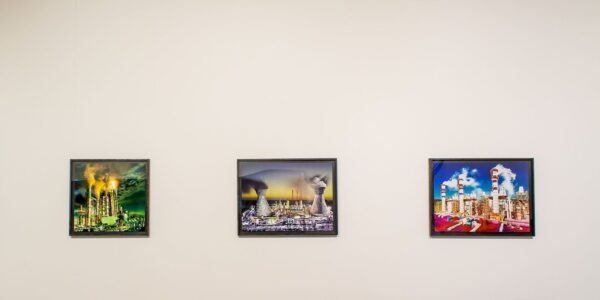
David LaChapelle, Land Scape series. Installation view David LaChapelle. Fotografías 1984-2013, Museo de Arte Contemporáneo (MAC), Parque Forestal, Santiago de Chile, Jul-Sept 2015. Photo: Damaris Herrera. Courtesy: MAC
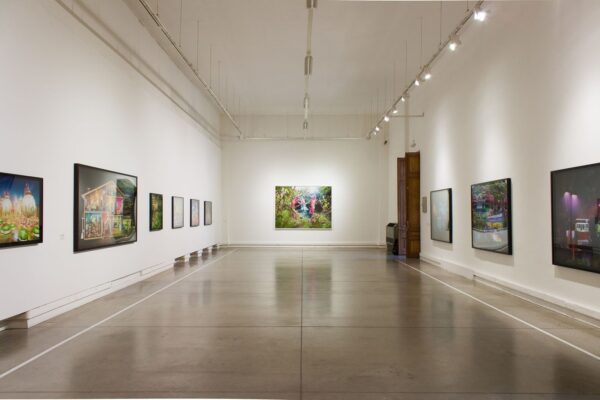
Installation view David LaChapelle. Fotografías 1983-2013, Museo de Arte Contemporáneo (MAC), Parque Forestal, Santiago de Chile, Jul-Sept 2015. Photo: Damaris Herrera. Courtesy: MAC
Alejandra Villasmil: You studied art for a while and thought that you would be a painter. You didn’t finish high school. How did you go from your interest in art to your practice as a photographer?
David LaChapelle: I left High School, Public School, when I was fifteen because I was bullied. I went to New York and stayed there for two years. Then, at seventeen, I went to the School of the Arts at the University of North Carolina -they have a High School Program. I applied for the Visual Arts program because it was tuition free. I was really hoping to get in there. I got in strictly on the basis of my photographs since my grades were failing because of missing school.
A.V: How was that transition?
D.L: I learned photography there. I loved it! I started working with the first roll of film, you know, the 36 frames, 35mm; it’s typical of High School. I took pictures of all my High School friends naked in my dormitory -ballet dancers, modern dancers in these classical Renaissance poses… you know, nothing erotic -my friends and I loved the Renaissance. Dancers are the best models. I found love in dance. In New York I learned discipline but also about all of the other arts. At school I drew the dancers performing, taking classes or during rehearsals.
A.V: There is definitely an influence of Classical European and Renaissance painting in your work, and actually painting as a medium informs much of your work. Your images have a painterly quality, a certain texture. Your pictures have some depth and material aspect that is characteristic of painting. Technically, how do you achieve that?
D.L: For me technique is very important. I’ve spent many years in the darkroom. In New York City I spent six years in black and white and six years in color labs, photo studios, night clubs. This is what I call the dark ages of my life -because I was always in the dark… in the darkroom, or in the night clubs (laughs). Technique is very important to me, the clarity of an image. I don’t like my photographs in Instagram or on computers because they don’t do the work justice. This (and points to the rooms at the museum) is always the ultimate way to see my pictures, to really comprehend them because you can really see the technique that is involved in them. The clarity of the images is very important, not just in terms of the actual image being free of grain or pixels or how exactly I want it technically, but also clarity of purpose, of meaning, clarity of the concept or what I want to communicate. That’s equally important. Along with that is the balance of the aesthetics, the way things look, the beauty of them.
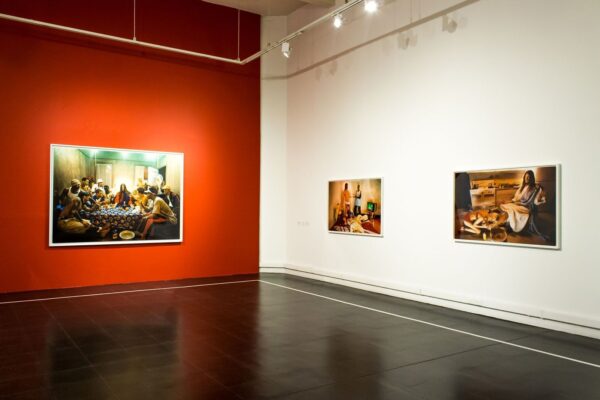
Installation view David LaChapelle. Fotografías 1984-2013, Museo de Arte Contemporáneo (MAC), Parque Forestal, Santiago de Chile, Jul-Sept 2015. Photo: Damaris Herrera. Courtesy: MAC
I think I’m polarizing to people because they think of me as a fashion or celebrity photographer and as a fine art photographer as well. But it’s none of my business; what people really think about me
A.V: The process is part of your signature, tell me more about how you compose an image?
D.L: It’s intuitive. I put the scene up and intuitively, it just happens. I’ve never thought of a style or things like that. It’s just about what I’m attracted to. The colors, the building of the settings, the drawings, the watercolors, the sketches, they start early on. So I’ve never thought of a style. But we put a lot of work into it. It definitely starts with the concept -what I want to say dictates what colors I choose, how the sets will look, how it will look at the end.
A.V: Actually, to me, more than a photographer you are an image producer. But let’s talk about your transition from a commercial photographer to an artistic photographer. You quit commercial photography in 2006. What has happened in these last ten years?
D.L: I really quit because I moved to Maui and I didn’t know that I would ever show at galleries again because I was a huge name in fashion magazines, and among celebrities. I didn’t think my work would be accepted in the galleries or the art world. For me it wasn’t an option.
A.V: Why did you think you wouldn’t be accepted?
D.L: I didn’t think that the galleries would be interested in exhibiting me as a fine artist. By that time there was a strong line between fine art photography and commercial photography. You couldn’t cross that line.
A.V: Sure. Nowadays these things are more intertwined…
D.L: Yes, it changed!
A.V: It was taboo then?
D.L: In the early 2000s you saw Murakami signing 30,000 dollars LV handbags in the middle of a museum. Keith Haring opened the Pop Shop in 1986 in Downtown Manhattan and the critics tore him apart for commercializing his work when he was actually selling 50 cents buttons and T-shirts and inviting children from the Bronx to hang out there. I mean, young people could have access to the art world too. He was making his work accessible, he wasn’t making money out of it. That’s how far we’ve come. I think I’m polarizing to people because they think of me as a fashion or celebrity photographer and as a fine art photographer as well. But it’s none of my business; what people really think about me.
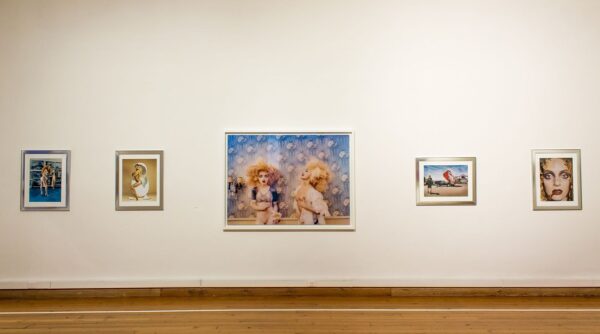
Installation view David LaChapelle. Fotografías 1984-2013, Museo de Arte Contemporáneo (MAC), Parque Forestal, Santiago de Chile, Jul-Sept 2015. Photo: Damaris Herrera. Courtesy: MAC
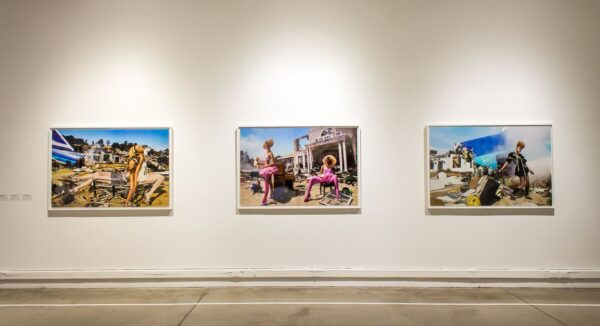
Installation view David LaChapelle. Fotografías 1984-2013, Museo de Arte Contemporáneo (MAC), Parque Forestal, Santiago de Chile, Jul-Sept 2015. Photo: Damaris Herrera. Courtesy: MAC
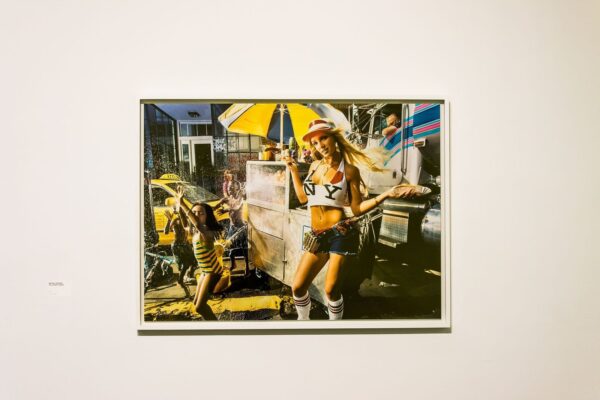
David LaChapelle, Britney Spears portrait. Installation view David LaChapelle. Fotografías 1984-2013, Museo de Arte Contemporáneo (MAC), Parque Forestal, Santiago de Chile, Jul-Sept 2015. Photo: Damaris Herrera. Courtesy: MAC
A.V: Your work has changed then…
D.L: It’s grown.
A.V: I see changes in terms of subject matter. You have here in this show these new landscapes deprived of the human figure, that stay apart from your body of work with the human body. Your work’s genre has gone from portraiture to landscape to still life.
D.L: Yes, but I’m still working with the figure even though some works in these series (Land Scape, Earth Laughs in Flowers, Gas) don’t have figures in them. The work has changed only because I’m changing. My interests are different than what they were twenty years ago. Hopefully as we get older and mature we think about the world differently. There is no growth otherwise. We are growing and hopefully improving as we get older. Now that I look at my work during the period when I was working in magazines, I realize that sometimes I wanted to create these escapist, humorous images because they were very dark times -AIDS-, so people needed escapist imagery. I was happy to do that, but sometimes you feel like doing other things. As you get older your thoughts on life evolve and hopefully your work evolves alongside these new ideas. Your passions, your honesty, you put all that into your work. Sometimes people want you to stay doing what you did in the 90s, but there are plenty of people who do that anyway. I’ve influenced a lot of young photographers so I don’t need to do that anymore (laughs).
I recall Andy Warhol fondly; I learned from him. He only said one thing to me directly about photography: «Do whatever you want. Just make sure everybody looks good,» which is something I knew but he confirmed to me
A.V: You’ve pushed the boundaries of digital imagery. I read in an interview that for the picture American Jesus Hold Me, Carry Me Boldly (2009), you used a Michael Jackson impersonator and spent weeks and weeks moving pixels around to create the face of Michael Jackson circa 1990…
D.L: I’ve said a lot of things about that picture. It’s kind of a mystery. The New York Times wrote that we were good friends, then the New York Post said that he was an impersonator… so it all depends on believing what you read. People believed a lot of lies about Michael when he was alive so I purposely have said contradictory things about that photograph. You can’t always believe what you read.
A.V: Another larger-than-live celebrity you met was Andy Warhol. Could you please share the story behind your work Andy Warhol: Last Sitting, the last portrait of Warhol?
D.L: Yeah, it was the last picture of him because he died shortly after that.
A.V: How did you meet him? How do you recall him?
D.L: I would see him a lot in nightclubs and things like that but it wasn’t until doing a lot of photographs that I wanted him to see them. I went to the Psychedelic Furs concert and he was there and I told him: «I have some photographs.. you know”… and he said: «Oh…OK»…. By that time I was having an exhibition at a gallery. It was 1984. He sent people from (Interview) magazine to come to look at the show. Then I went to their offices. They gave me my first assignment and they kept me working for every issue. I really loved it. I really loved being around him. All the Interview people were really exciting. They were a great staff and I’m still friends with many people there. It was the magazine in the world for popular culture. It was very exciting to see my pictures published there. That led me to working for other magazines. I recall Andy fondly; I learned from him. He only said one thing to me directly about photography: «Do whatever you want. Just make sure everybody looks good,» which is something I knew but he confirmed to me.
A.V: When do you know something looks good?
D.L: I like to make people look good. There is enough ugliness in the world. You are an artist and you know when something is beautiful, although beauty is also in the eye of the beholder. Just because someone is heavy it doesn’t mean they are ugly. So it’s about finding beauty in unexpected places. But I don’t exploit people. There are enough photographers who do that. And there is enough darkness and ugliness in the news, in the streets, and in our daily lives.
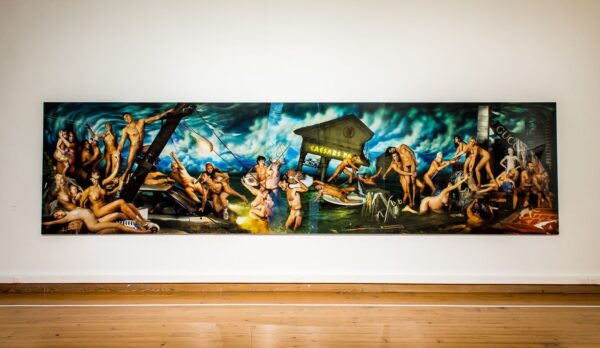
David LaChapelle, Deluge, 2006. Installation view David LaChapelle. Fotografías 1983-2013, Museo de Arte Contemporáneo (MAC), Parque Forestal, Santiago de Chile, Jul-Sept 2015. Photo: Damaris Herrera. Courtesy: MAC
There are good things to be found in the Bible, or in the teachings of Buddha, or in the Native American people and their relationship to Earth and the land -and now we are finding out that they weren’t ignorant, that they were highly intelligent… they lived sustainably and now we know we have to live sustainably
A.V: In the Deluge series there is this sense of mayhem, of apocalyptic end. What’s the message you want to convey behind these flooded spaces?
D.L: That series comes from the Book of Genesis, the flood’s narrative of Noah. We live in times when greed rules the planet. Some scientists say we are currently in the sixth extinction. Sometimes a patient gets diagnosed with cancer and starts thinking of what she can give, and she changes her life, her priorities… She becomes enlightened through the cancer, through the diagnosis. Our society, our culture, globally, has been diagnosed with terminal cancer on so many levels. It’s incredible that now our entertainment is like terrorism. We are a sick society. Most of our entertainment revolves around murder, serial killers, torture, brutality, cruelty… we let our children watch videogames far more than we let them see a naked woman’s nipple. This is a fucked-up world.
A.V: That’s what Larry Flynt said… What is your relationship with Catholicism and how the imagery and symbolism of Catholicism serve as metaphors to communicate social issues?
D.L: I was brought up Catholic. My uncle is a priest -Hector LaChapelle, my father’s brother. My mother called him: «Holy Hector the Money Collector» (laughs). My mother found God in nature; that was her Cathedral. She is very much a loner, she didn’t have lots of girlfriends. She worked hard jobs, raising her kids. She really taught me about love, respect, and empathy for animals and plants, and the joy and peace of nature. And my father was a Catholic, so I have this duality of influence. There is beauty in both places. I think people condemn the Catholic Church too easily. Of course, you can get people in the Church who are contaminated -there have been bad Popes, yes, there have been bad priests, yes, bad people and evil people in the Church, yes…
A.V: Have you had any kind of criticism or bad reactions from the Catholic Church?
D.L: When I did a picture of Kanye West as a black Jesus, the Catholic Church condemned it because he is a rapper. I think sometimes the Church uses these things to distract people from the real issues. But now we have a Pope who seems to be more enlightened. At least he says «I don’t judge people» -that’s what the Bible teaches, that’s what Jesus teaches. And I know there are good people in the Church, there are artists who have made work for the Church -Michelangelo was one of them-, or the anonymous people who laid the bricks for some of the beautiful Cathedrals around the world that have survived the wars. They were devoted, beautiful people who followed the true teachings of Christ. Jesus said: «Don’t judge people, forgive people.» There are beautiful parables in the Bible that rely on nature. But then you have a lot of people, fundamentalists, who take religion as a weapon and use it for killing. The Catholic Church did it with the Crusades. I rather like the idea of a Christ as a shepherd with his flock. There are good things to be found in the Bible, or in the teachings of Buddha, or in the Native American people and their relationship to Earth and the land -and now we are finding out that they weren’t ignorant, that they were highly intelligent… they lived sustainably and now we know we have to live sustainably.
I’m interested in the greater world. I’m interested in using photography to reach people, not just the people in the art world. That’s just too small
A.V: The Pietá is one of the representations that often recurs in your work. Why?
D.L: Because it’s the symbol of greatest loss -a mother losing a child. It’s one of the most famous scenes in the History of Art but I wanted also to represent the small death, I mean, not only Mary and her son Jesus but also other deaths that people don’t see, like the woman who is a junkie and her boyfriend who is dying of AIDS. Like the picture with Courtney (Love)… I had just done Kanye as black Jesus so then I wanted to make the blond Jesus with my boyfriend and Courtney…
A.V: You deal with universal themes -fear, hope, death, the meaning of life and the presence of the divine and the sublime in the world. How do you see artists nowadays relating to these issues in their work?
D.L: I don’t spend a lot of time looking at contemporary artworks because I’m busy making my own, and when I’m not doing that, I like to wander around and be in nature. Being in Maui, isolated. A lot of the contemporary art I see, I don’t really understand. You have to read a lot about it to really understand what the artist is trying to say. In a way, I see trends in art… and there is a lot of commodification in the art world with these auction prices and stuff. I feel very much apart from that. I’ve never felt part of the art world as I’ve never felt part of the fashion world neither.
A.V: Do you see affinities between the current art world and the world of fashion?
D.L: The art world can be more fashionable than the fashion world itself, and it has trends just as the fashion world. In the fashion world you go to the fashion shows -The New York Fashion Week, the ready-to-wear… and in the art world you go to Art Basel or Frieze London. It’s the same. But I’m not interested in these small worlds, I’m interested in the big world -beyond fashion or art. I’m interested in the greater world. I’m interested in using photography to reach people, not just the people in the art world. That’s just too small.

David La Chapelle, Eminem: About to Blow, 1999. Installation view David LaChapelle. Fotografías 1983-2013, Museo de Arte Contemporáneo (MAC), Parque Forestal, Santiago de Chile, Jul-Sept 2015. Photo: Damaris Herrera. Courtesy: MAC
A.V: What have your learned from photographing celebrities? What do you miss about it?
D.L: I enjoyed it at the time when I was in it. At a certain point, I moved on. I learned a lot of things. I grew up.
A.V: Does it still have some impact on what you are doing now as a photographer?
D.L: I learned -in magazines- how to communicate quickly, with an image -and our world today is so fast moving. I love photography because it stops time. We need to slow down. The still image has a new role with greater importance than ever before.
A.V: And working for magazines you also learned how to work with a team. You are not the type of idealized photographer, the romantic photographer that works alone in the studio or in the street. In some way, you are an Art Director.
D.L: I have a team, but I also spend a lot of time alone making the drawings and the sketches and afterwards working with the images by myself. The shooting, we do it as a team. I’m very involved with the construction of the settings, the printing and every aspect of the scene I want to photograph. It’s like the artist who makes installation work -he has to be there. Well, some of them have to. I’m very involved with all the steps of it. The printing is very important to me. The technique is very important to me as I said before.
A.V: Your work is highly crafted…
D.L: I love the craft. I love the making of things. In these pictures, I choose everything: the color scheme…the paper, for example, has to give me some parameters to work with…

Installation view David LaChapelle. Fotografías 1983-2013, Museo de Arte Contemporáneo (MAC), Parque Forestal, Santiago de Chile, Jul-Sept 2015. Photo: Damaris Herrera. Courtesy: MAC
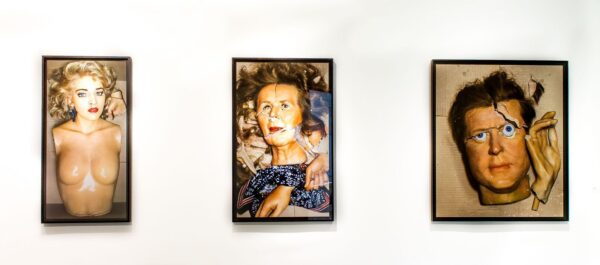
David LaChapelle, Still Life Series, 2009-2012. Installation view David LaChapelle. Fotografías 1983-2013, Museo de Arte Contemporáneo (MAC), Parque Forestal, Santiago de Chile, Jul-Sept 2015. Photo: Damaris Herrera. Courtesy: MAC

David LaChapelle, Negative Currency Project: US Dollar, 1990-2008. Installation view David LaChapelle. Fotografías 1983-2013, Museo de Arte Contemporáneo (MAC), Parque Forestal, Santiago de Chile, Jul-Sept 2015. Photo: Damaris Herrera. Courtesy: MAC
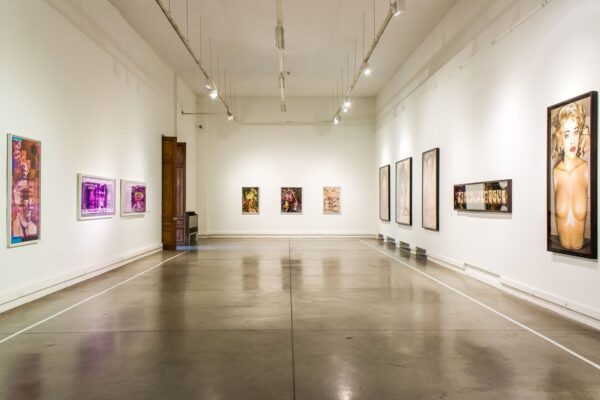
Installation view David LaChapelle. Fotografías 1983-2013, Museo de Arte Contemporáneo (MAC), Parque Forestal, Santiago de Chile, Jul-Sept 2015. Photo: Damaris Herrera. Courtesy: MAC
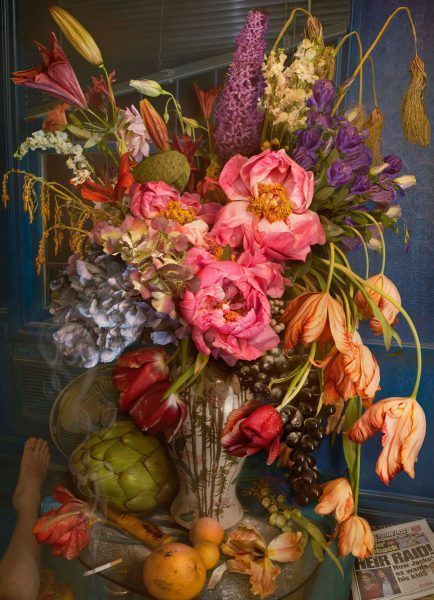
David La Chapelle, Earth Laughs in Flowers – Wilting Gossip, 2008-2011, chromogenic print ©David LaChapelle
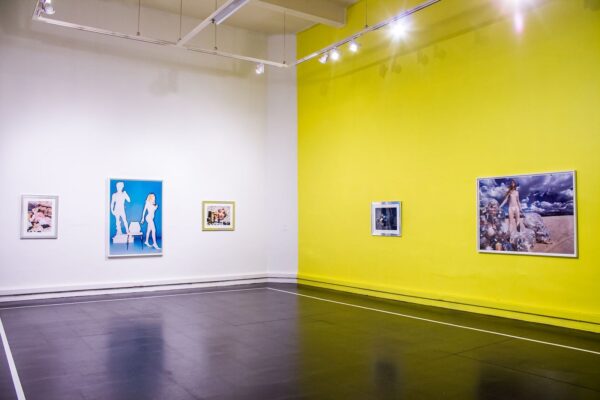
Installation view David LaChapelle. Fotografías 1983-2013, Museo de Arte Contemporáneo (MAC), Parque Forestal, Santiago de Chile, Jul-Sept 2015. Photo: Damaris Herrera. Courtesy: MAC

Installation view David LaChapelle. Fotografías 1983-2013, Museo de Arte Contemporáneo (MAC), Parque Forestal, Santiago de Chile, Jul-Sept 2015. Photo: Damaris Herrera. Courtesy: MAC
You have to hear your own voice. Your intuition is your GPS
A.V: In one sentence, what is an effective image?
D.L: One that touches people.
A.V: And what would you advise to young photographers and photography students?
D.L: I would advise them not to go to Photo College but to get working experience with internships. Not to run up a debt to study Photography but to study Art History which you can do online and for free, or you can take classes at a University at night for free. No one will ever ask you if you went to college or where you graduated from. They are just interested in your photographs. My other advice to them is just to photograph what really excites them. Go for that, and turn off all the devices and skip the noise. Don’t look at art magazines, don’t go to the galleries, but go and look for inspiration out there -in nature and inside you. Because there is no road map to becoming an artist. You have to hear your own voice. Your intuition is your GPS.
También te puede interesar
ENTRE LA REMANSA Y LA ACELERACIÓN. MICROPOLÍTICAS DE TIEMPO, DE CAMILA COLUSSI
Con esta obra, que monitorea señales de temblores alrededor del mundo, la artista y tecnóloga creativa chilena propone una reflexión sobre la actividad sísmica de la tierra, el tiempo en la actualidad y el...
Beca Ama Abre Convocatoria 2018 para Residencia en Londres
Fundación AMA (Santiago de Chile) y Gasworks (Londres) anunciaron hoy el lanzamiento de la convocatoria abierta para la Beca AMA 2018, que permitirá a un artista de nacionalidad chilena y con residencia permanente en...
ZIMOUN, ARTISTA SONORO: “EL SILENCIO ES EL SONIDO MÁS INTERESANTE DE TODOS”
El artista sonoro Zimoun (Suiza, 1977) presenta en el Museo de Arte Contemporáneo (MAC) de Santiago de Chile su obra site-specific más reciente, elaborada a partir de 230 motores y varillas de madera que...

